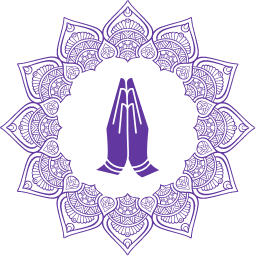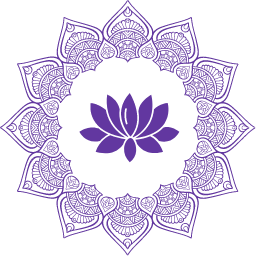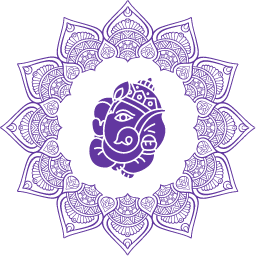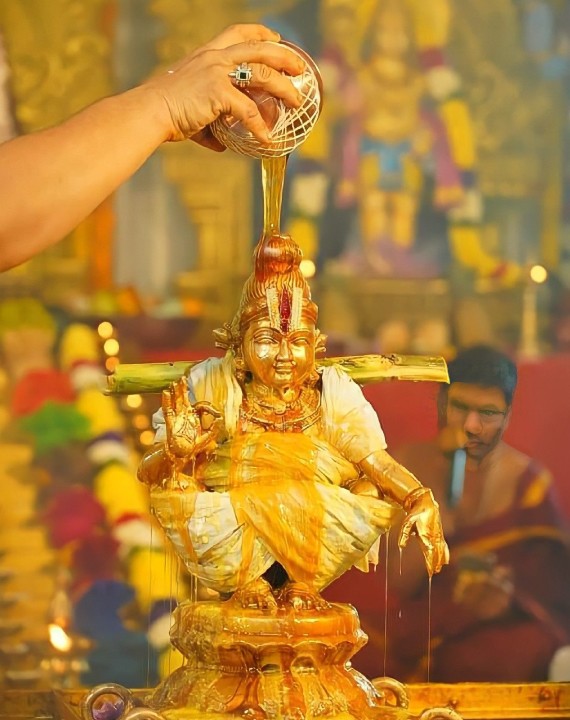Swami Saranam – The Uthram-birth star of Lord Ayyappan is been celebrated on 21st Feb, at pandalam valliyakoikal temple.
Swamy Saranam – A late Sanskrit text describes Ayyappan as the son of Shiva and Vishnu (with the latter in his form as the enchantress Mohini). Abandoned by his parents with but a bell around his neck, he was adopted by a Pantalam king of Kerala, and, soon after, his divinity was recognized and a shrine erected to him.
Swamy Saranam – A devotee aspiring for a darshan of Lord Ayyappan has to be pure both mentally and physically and for this, he is expected to observe a mandatory fast (vritham) of 41 days that usually begins on the first day of the Malayalam month of Vrischikam in mid November.
Swamy Saranam – The four principal Mahavakyas
• ekam evadvitiyam brahma – Brahman is one, without a second (Chāndogya Upaniṣad)
• so ‘ham – I am that (Isha Upanishad)
• sarvam khalvidam brahma – All of this is brahman (Chāndogya Upaniṣad 3.14. …
• etad vai tat – This, verily, is That (Katha Upanishad)
Swamy Saranam – The phrase was given its most literal interpretation by the 8th–9th-century thinker Shankara of the Advaita (Nondualist) school, for whom the statement was one of the great assertions fundamental to his doctrine.
Swamy Saranam – Guruji’s famous salutation and meditation chant, ‘Aham Brahmasmi’ has its origin in ancient Hindu philosophy. It is a Sanskrit saying, which can be translated to ‘I am Brahman’ or ‘I am the ultimate energy’
Swamy Saranam – The Sanskrit word Prajna means “Jñāna or Chaitanya (consciousness)”, and spontaneous concept. Brahman is the Absolute, Consciousness, Infinite and “Supreme Truth”. Especially “Brahman is Jñāna”; “The ultimate reality is Prajna”. “Prajnanam Brahma” means “Brahma-Chaitanya” or “Brahma-Jñāna”
Swamy Saranam – Pandala’s king brought a golden belt and tied it around the Lord’s legs so that the Lord felt comfortable to sit in the position and remained in the temple to bless the devotees forever. That’s why we find the golden belt tied to the legs of Ayyappan.
Swamy Saranam – The black clothes symbolically indicate a mind withdrawn from all materialist objects. The black cloth suggests the Ayyappa devotee is dead to the world of perceptions, emotions and thoughts and he is immersed in thought of Ayyappa.
Swamy Saranam – Taittiriya Upanishad’s hymn 11.11 states, “Speak the Satya (truth), conduct yourself according to the Dharma (morality, ethics, law)”. Translation 1: Truth alone triumphs, not falsehood.
Swamy Saranam – The term “Brahman” e. mologically means the Great, the Supreme. It sums up the Hindu view o. the nature of ultimate reality. Brahman is the cosmic principle of existen.
Swamy Saranam – The various philosophical theories in the early Upanishads have been attributed to famous sages such as Yajnavalkya, Uddalaka Aruni, Shvetaketu, Shandilya, Aitareya, Balaki, Pippalada, and Sanatkumara. Women, such as Maitreyi and Gargi, participate in the dialogues and are also credited in the early Upanishads.
Swamy Saranam – Pandalam royals and Ayyappa myths
Another group of tribals had been near the area on May 23 to collect minor forest produce. One of them, a 25-year-old man, Podiyan, had gone up the 18 steps and found the temple burnt down.
Swamy Saranam – Ayyappan temples typically show him as a celibate yogi. A few important temples such as the one at Achankovil Sree Dharmasastha Temple near Travancore, however, depict him as a married man with two wives Poorna and Pushkala, as well as a son Satyaka.
Swamy Saranam – Upon her defeat, it was revealed that she was a beautiful young woman in reality who had been cursed to live the life of a demon. The defeat set the woman free who, in turn, proposed marriage to Lord Ayyappa. But, the Lord refused as he had been ordained to celibacy
Swamy Saranam – Shiva is known to have two sons — the lovable elephant-headed god Ganesha, the destroyer of obstacles and Lord Kartikeya, the god of war.
Swamy Saranam – Shiva falls in love with Mohini and proposes a union with her. Mohini-Vishnu declines saying that union of two men was unfruitful. Shiva informs Mohini-Vishnu that he was just one of forms of his Shakti (“female consort”).
Swamy Saranam – Adhi Maha Sastha is worshipped with two consorts – Poorna and Pushkala. He is worshipped in many villages of South, as a protector of their houses and cities. He is also offered prayers to help find missing/lost items.
Swamy Saranam – The devotees usually won’t shave the beard or cut his hair during the period. He is also supposed to avoid all luxuries and sleep on the floor. He can’t attend funerals during the period.
Swamy Saranam – Yes it is possible to do the same by going with out Viratham, You will be allowed to go inside the sannithanam by back steps, But out of the Sabarimalai Dharisanam, Biggest part is to ground the foot in the 18 golden Steps it will only happen if we have irrumudi in head.
Swamy Saranam – Popularly called the Mandala period, the brahmacharya fasting for 41 days is expected to prepare the Ayyappa devotees mentally and physically for the annual Sabarimala pilgrimage. Almost all temples across the State irrespective of their size and stature have geared themselves up for the holy season.
Swamy Saranam – There are 14 Upanishads which are most well known or most important – Katha, Kena, Isa, Mundaka, Prasna, Taittiriya, Chhandogya, Brihadaranyaka, Mandukya, Aitareya, Kaushitaki, Svetasvatara and Maitrayani. All the 4 Vedas are compositions of different texts. Upanishads are in the last section of any Vedas.
Swamy Saranam – The latest Upnishad is Muktikā Upnishad and was recorded by Dara Shikoh.It dates to 1656. Dara Shikoh was son of Mughal emperor Shah Jahan and is known to have translated fifty Upanishads into Persian. There are 108 Upanishads and they are also called Vedanga.
Swamy Saranam – Dhruv Bhatt
Swamy Saranam – The term Advaita (literally “non-secondness”, but usually rendered as “nondualism”, and often equated with monism) refers to the idea that Brahman alone is ultimately real, while the transient phenomenal world is an illusory appearance (maya) of Brahman
Swamy Saranam – Brahma is the first god in the Hindu triumvirate, or trimurti. The triumvirate consists of three gods who are responsible for the creation, upkeep and destruction of the world. The other two gods are Vishnu and Shiva. Vishnu is the preserver of the universe, while Shiva’s role is to destroy it in order to re-create.
Swamy Saranam – Aham Brahmasmi is from the ‘Brhadaaranyaka Upanishad’, a part of Yajur Veda, and it means ‘I Am Brahman’. Aham = I; and Brahmasmi = am Brahman. (This Brahman should not be confused with ‘Brahman’/’Brahmin’, the Hindu ‘upper’ caste)
Swamy Saranam – Definition – What does Mahavakya mean? A mahavakya is a grand, profound saying that has great importance to a spiritual yogic practice. The word translates as “grand saying” or “great pronouncement.” These are typically very short and highlight the main point or wisdom of spiritual texts or concepts.
Swamy Saranam – The steps are believed to be special for other reasons too. For one, Ayyappa was a master of 18 weapons — each step is dedicated to each of those weapons, which Ayyappa is believed to have finally surrendered at the “pathinettam padi” or the eighteenth step.
Swamy Saranam – There is a spiritual relation existing between Lord Shani(Saturn) and Lord Ayyappa (Manikanda swamy). After seeing the troubles caused by Lord Saturn to his devotees he suggested for Ayyappa deeksha of 41 days as remedy for all the troubles which are caused by Lord Saturn.
Swamy Saranam – Hinduism believes that Lord Ayyappa chose to be a Naistika Brahmacharya, which implies that he wishes to be celibate and withdrawn from civilisation. While that may stand true, people are quick to place the responsibility of the maintenance of this celibacy on women.
Swamy Saranam – This idol was later installed at Haridwar. The idol made by Swami Vimochananda was installed at Kashi with 18 steps.
Swamy Saranam – During the times of Ramayana, there lived an ascetic woman named Sabari in this region. She was doing a strict penance for several years only to see Lord Sriram. Finally Ram visited her and accepted her humble offerings. The hill got the name Sabarimala after this historical character
Swamy Saranam – A late Sanskrit text describes Ayyappan as the son of Shiva and Vishnu (with the latter in his form as the enchantress Mohini). Abandoned by his parents with but a bell around his neck, he was adopted by a Pantalam king of Kerala, and, soon after, his divinity was recognized and a shrine erected to him.





